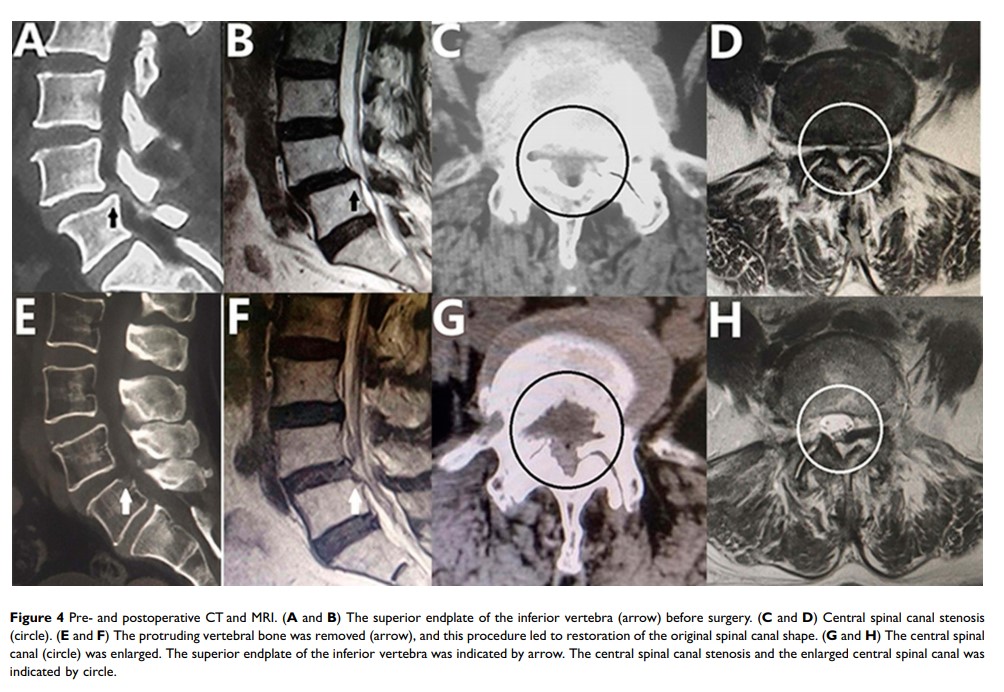9 1 2 3 6
论文已发表
注册即可获取德孚的最新动态
IF 收录期刊
- 2.6 Breast Cancer (Dove Med Press)
- 3.9 Clin Epidemiol
- 3.3 Cancer Manag Res
- 3.9 Infect Drug Resist
- 3.6 Clin Interv Aging
- 4.8 Drug Des Dev Ther
- 2.8 Int J Chronic Obstr
- 8.0 Int J Nanomed
- 2.3 Int J Women's Health
- 3.2 Neuropsych Dis Treat
- 4.0 OncoTargets Ther
- 2.2 Patient Prefer Adher
- 2.8 Ther Clin Risk Manag
- 2.7 J Pain Res
- 3.3 Diabet Metab Synd Ob
- 4.3 Psychol Res Behav Ma
- 3.4 Nat Sci Sleep
- 1.9 Pharmgenomics Pers Med
- 3.5 Risk Manag Healthc Policy
- 4.5 J Inflamm Res
- 2.3 Int J Gen Med
- 4.1 J Hepatocell Carcinoma
- 3.2 J Asthma Allergy
- 2.3 Clin Cosmet Investig Dermatol
- 3.3 J Multidiscip Healthc

经皮椎间孔镜下内镜减压术治疗老年中央型腰椎管狭窄症和退行性腰椎滑脱症患者:一种新型手术技术和临床结果
Authors Cheng XK, Chen B
Received 17 April 2020
Accepted for publication 22 June 2020
Published 21 July 2020 Volume 2020:15 Pages 1213—1219
DOI https://doi.org/10.2147/CIA.S258702
Checked for plagiarism Yes
Review by Single-blind
Peer reviewer comments 2
Editor who approved publication: Dr Zhi-Ying Wu
Purpose: Percutaneous transforaminal endoscopic decompression (PTED) is an ultra-minimally invasive surgical option for patients that does not involve the same amount of destabilizing facet joint removal as a traditional laminectomy. The objective of this study was to describe the procedure of PTED under local anesthesia for geriatric patients with central spinal stenosis and degenerative lumbar spondylolisthesis (CSS-DLS).
Materials and Methods: From January 2016 to December 2018, 30 consecutive geriatric patients who underwent surgery for single-level CSS-DLS were retrospectively reviewed. All patients were followed for at least 12 months (12– 24 months). The visual analog scale (VAS) scores, Oswestry disability index (ODI) scores and modified MacNab criteria were used to evaluate the clinical results.
Results: The mean age was 73.1± 6.0 years. Follow-up ranged from 12 to 36 months. The mean±SD values of the preoperative VAS for leg pain and ODI were 7.4± 1.0 and 67.2± 8.4, respectively. The values improved to 2.2± 1.1 and 19.9± 8.1 at 12 months postoperatively. The outcomes of the modified MacNab criteria showed that 93.3% of patients obtained a good-to-excellent rate. The percent slippage of spondylolisthesis before surgery (13.8± 2.5%) and at the end of follow-up (14.0± 2.5%) was not significantly different.
Conclusion: PTED under local anesthesia could be a useful supplement to traditional decompression in geriatric patients with CSS-DLS.
Keywords: percutaneous transforaminal endoscopic decompression, degenerative lumbar spondylolisthesis, central spinal stenosis, geriatric patients
